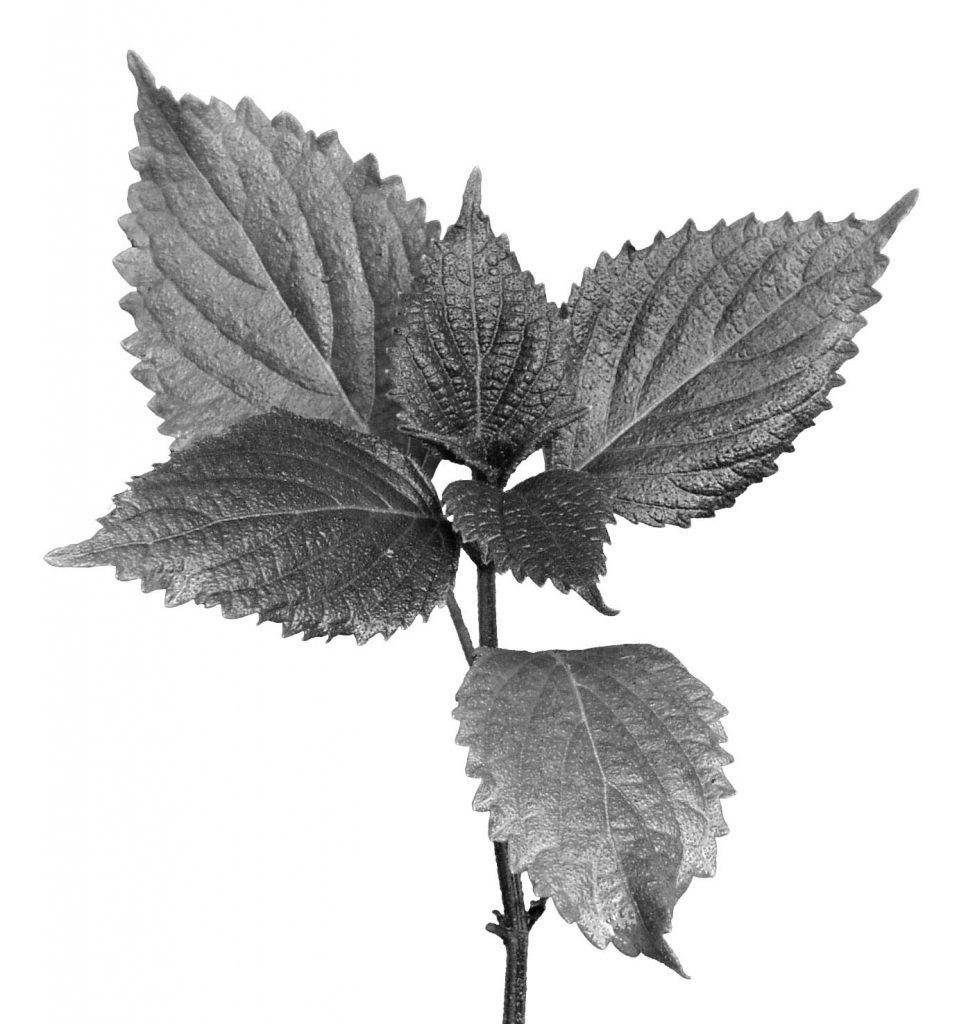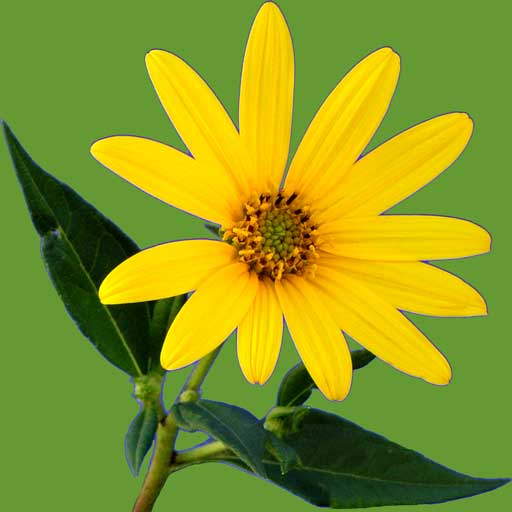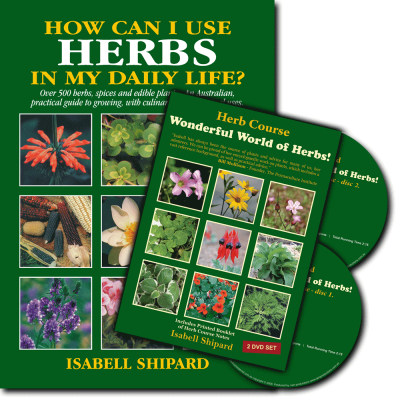Shiso, Zi-su-zi, Beefsteak Plant, Chinese Basil, Purple mint
Perilla frutescens syn. P. ocymoides, P. nankinesis
F. Lamiaceae
Description
The perilla genus has at least 6 species that have been used by man. Their area of origin in Asia extends from India to Japan. Perilla is an aromatic, fast growing annual 50cm to 150cm tall, resembling Coleus in appearance, and large leafed basils, to which it is related. Two lipped flowers can be white, pink or lavender-purple, forming in leaf axils and terminal spikes. The plant has a very bushy canopy of opposite leaves forming on square stems. Leaves are ovate to 15cm long, and the margins are soft toothed and may be indented and frilly.
… … omitted text, please see How can I use HERBS in my daily life? for full text.

Culinary Uses
The herb is a traditional oriental flavouring, particularly in Japanese cuisine, where it is used as readily as we use parsley. The leaves are highly aromatic, and really cannot be compared to the smell of any other herb. The flavour is slightly sweet and spicy, with a note of mint. Perilla’s aroma and flavour take a while to be appreciated. Leaves are eaten raw, cooked, salted and pickled, or used as a garnish. Young green leaves, particularly of green perilla, are essential for sushi. Purple perilla leaves give a vivid colour and flavour to the traditional Japanese sweets and umebashi pickled plums. Perilla is also used in pickled ginger, Chinese/Japanese artichokes (which are an attractive gourmet root vegetable, see pages 84, 269) and raw fish dishes like sashimi. Leaves are cooked in tempura batter and used to flavour bean curds. Perilla seeds may be sprouted, like alfalfa, added to any dish or used as a garnish. Flowers make a dainty, edible, decoration on a dish. One of the components of the volatile oil extracted from perilla, perilla-aldehyde, can be made into a sweetener, said to be 2000 times sweeter than sugar, with very low kilojoules. This sweetener has been used as a substitute for maple sugar or licorice in processed foods, and is utilized in processed foods and tobacco. However, an antioxime of perillaaldehyde, is considered too toxic for food use, although, it is used in minute amounts in flavouring sauces, toothpaste and confectionery.
Analysis of perilla’s anti-microbial properties, has been documented to have over one thousand times the strength of synthetic food preservatives. Perilla is grown as an oil seed crop from Japan to northern India. The oil comprises up to 51% of the seed’s weight. The oil is used for culinary purposes, similar to linseed oil, and also has industrial application in paint, printing, and paper manufacture. The natural red pigment called shisonin is used in food processing as a colourant.


